[I] grew up in a small town on the Connecticut River, and my family always had boats. My father was a house carpenter and a barn full of tools was an essential childhood playground. During college I attended the Williams College Mystic Seaport Program, a one semester undergraduate program at Mystic Seaport Museum, America’s largest maritime museum. There I had the opportunity to do an internship with one of the Seaport’s boatbuilders and I got my first taste of the craft. After graduation I would eventually return to boatbuilding as a career.
Much of my work as a boatbuilder in the United States has involved collaborating with museums and municipalities, building replicas of traditional boats as public demonstrations.
These projects involve researching traditional boat designs, teaching, as well as boatbuilding. I enjoy the varied aspects of this type of work, appreciating both working with my hands as well as engaging the public in a teaching role, and writing about my projects. I also build custom boats for clients and have been involved in restorations of wooden vessels from a Canadian skiff to a three-masted schooner.
The most significant turn in my professional life occurred in 1990 when I accepted the invitation of my college roommate to visit his native country of Japan. On that first trip I met several boatbuilders, and became exposed to a world of craft both mysterious and alluring. I met craftsmen who possessed extraordinary skills, yet also discovered the craft was only transmitted via an ancient apprentice system. I say “ancient” because the apprentice system exemplified in Japan had disappeared generations ago in the United States. Where I had access to hundreds of drawings of traditional boats of my own culture, in Japan the craft was only accessible via individual craftspeople, each jealously guarding what they knew.
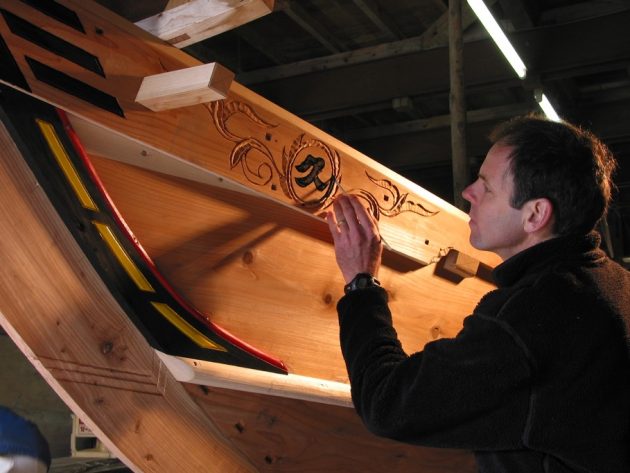
I returned to Japan in 1993 and 1994, expressly to interview one of the boatbuilders I met on that first trip. Mr. Koichi Fujii was the last builder of taraibune, or tub boats, and with the help of an interpreter I did my best to begin documenting what he knew. Frustratingly, Fujii didn’t teach in any conventional sense that I was used to. Instead he worked in silence, demonstrating techniques while I struggled to follow along. Tub boats are essentially barrels, so I was learning Japanese coopering, a craft I was completely unfamiliar with. Fujii was also remarkably skilled and worked at what seemed like lightning speed, and it dawned on me that the only way to document the craft was to work alongside a master.
Luckily, after my third visit Mr. Fujii invited me to be his student, and in 1996 he and I built a taraibune. I knew almost no Japanese at the time but ironically this was not an obstacle, because Fujii, like all of my subsequent teachers, forbade talking in the workshop. My next uncomfortable lesson was understanding that I had to learn by observation alone. After work there might be time set aside for questions, but there was no teaching method. Rather there was a learning method, one the apprentice bears total responsibility for.
In 1999 Mr. Fujii passed away and because I was his only apprentice when a local foundation approached me I proposed both training a local craftsman and publishing my research. This was, in essence, both the traditional and foreign reaction to the loss of this last great craftsman. In 2003 the Kodo Cultural Foundation, with funding from the Nippon Foundation, published my first book, The Tub Boats of Sado Island; A Japanese Craftsman’s Methods (Shokunin no Gihou; Sado no Taraibune) in English and Japanese. With a forward on the ethnology of these unique boats by Mr. Toshio Sato, my book is essentially a how-to primer.
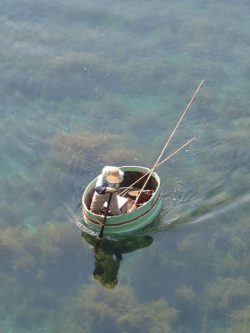
My first apprenticeship was an extraordinary experience both personally and professionally, and I felt a compelling urge to continue to explore this craft and find more teachers. As of today I have made eighteen visits spanning twenty-five years and apprenticed with five boatbuilders: on Sado Island with Mr. Fujii, as well as Urayasu, Tokyo, Aomori, and Okinawa. In addition I have traveled to forty-five of Japan’s forty-seven prefectures, meeting and interviewing over fifty boatbuilders.
My teachers were in their seventies or eighties at the time I studied with them, and for each I was their sole apprentice.
The pattern of each apprenticeship was remarkably similar: all my teachers cautioned me there would be no speaking in the shop. Initially I was given menial tasks like cleaning and sharpening tools. It was expected, however, that I would be paying strict attention to my master, because in each case when I was called forward to work on the boat I would be able to perform the techniques perfectly. Some of my teachers showed some patience with me, but others were absolutely strict about this point. Unlike traditional apprentices, I entered the workshop as an experienced boatbuilder, knowing how to use and sharpen the tools and shape wood, but I came to quickly appreciate why the average boatbuilding apprenticeship in Japan lasted six years. Some of that time was an exchange of cheap labor for the master, but most of the time would have been spent painstakingly observing the master’s work, inexorably gleaning the techniques of the trade. Much is made of the fact that Japanese saws and planes cut on the pull stroke, the opposite of Western tools, but that was an easy adjustment for me compared to the unfamiliar stance of my teachers, who enthusiastically endorsed my desire to learn their craft, but made little direct effort to teach me.
Japanese boats are built so differently than western boats there were specific techniques which were completely new to me. One, a key component to this craft, is called suriawase, combining the verbs “to rub” and “to put together.” All the seams in a Japanese boat are fit by running a series of saws through the seams. Each pass cuts through the tight fitting areas and after many passes the two edges fit perfectly. I should add that Japanese boats are built without any caulking; they are also expected to be watertight at launching. As several of my teachers stressed, any leaks at launch bring great shame upon the boatbuilder. My third teacher, Mr. Kazuyoshi Fujiwara of Tokyo, took great pains to teach me this technique. He stressed over and over that I could not call myself a boatbuilder without mastering it.
Over the years my language skills improved, particularly the vocabulary of boatbuilding. I consider myself an intermediate speaker of everyday Japanese, but in the boat shop I come closer to fluency. Many times native speakers who have been spectators to my conversations with boatbuilders have mentioned that they didn’t understand a single word of my conversations with craftsmen.
Japanese crafts: nusumi-geiko. It means “stolen lessons” and refers to a common practice where apprentices were forced to steal the most essential dimensions from the master. One of my teachers was taught by his father, but my four other teachers chafed under this system. Each found a way to connive the information they needed. Mr. Fujii told me he would sneak into his master’s workshop at night and study his layout by candlelight until he understood it. My second teacher said he proved himself as the best apprentice, but also plied his master with gifts of sake. In addition to patience, perseverance, and powers of observation, the apprentice also needed guile.
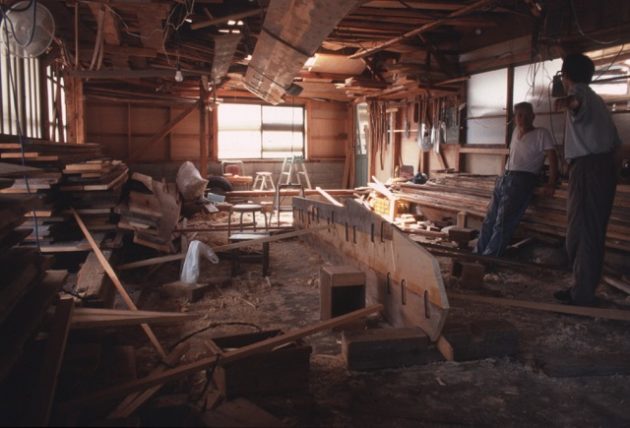
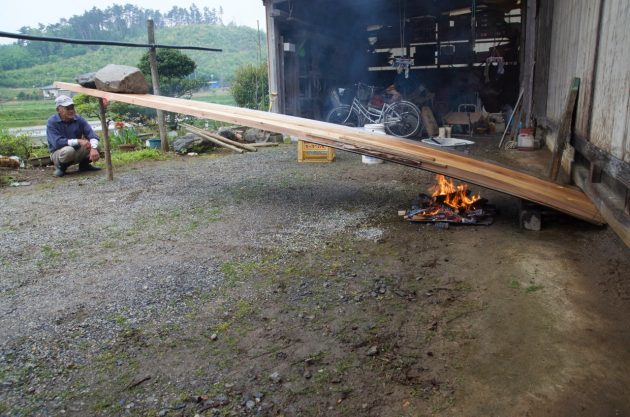
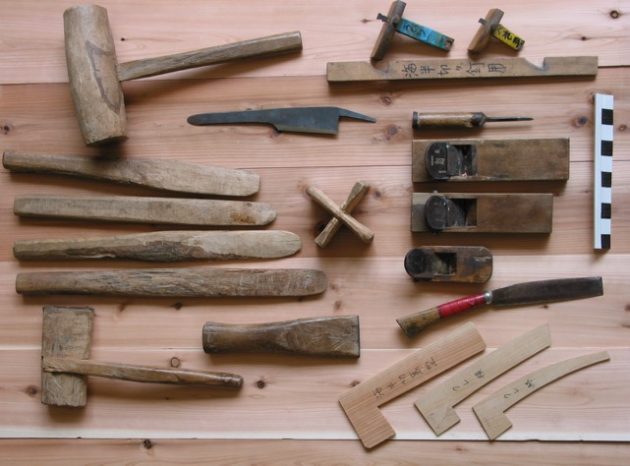
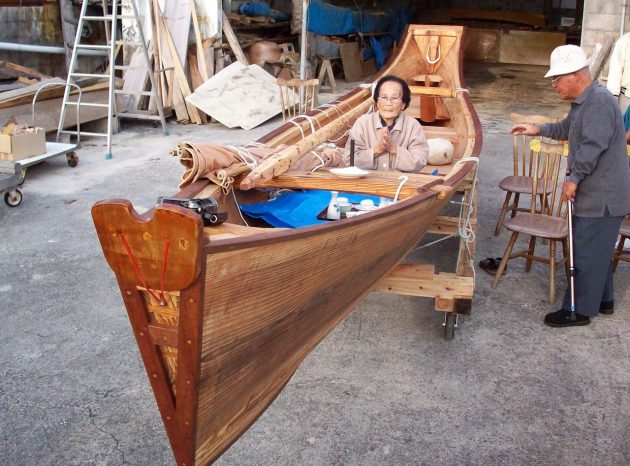
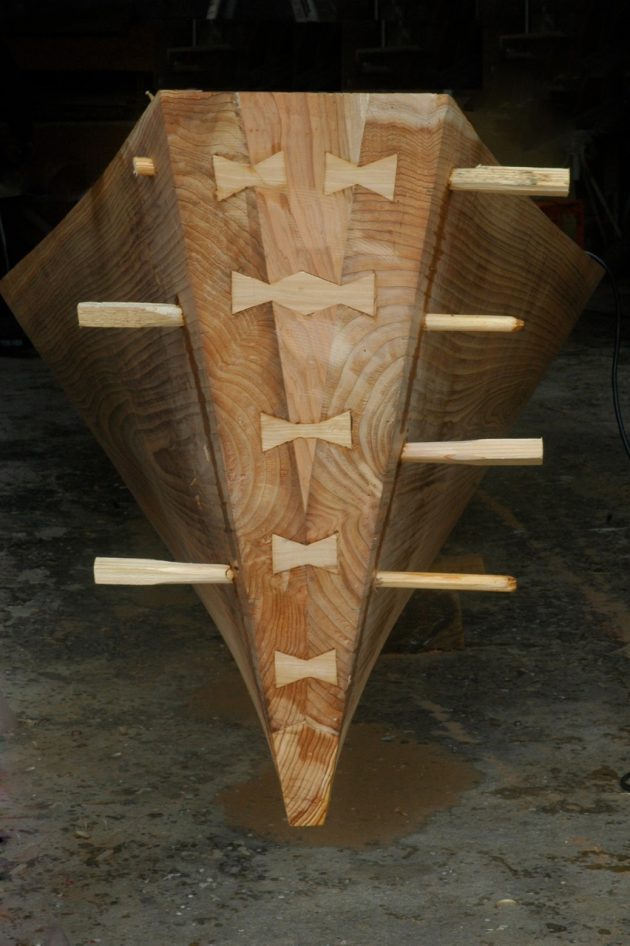
My latest research in Japan in 2015 was in the tsunami zone, documenting the work of Mr. Hiroshi Murakami, one of the last surviving boatbuilders of that region. He built an isobune, the most common small fishing boat of this coast. Prior to 2011, this part of Japan (Sanriku) had the largest concentration of traditional watercraft that I have seen anywhere in Japan. Over ninety percent of the fishing fleet was destroyed or damaged in the disaster, meaning the last victim of the tsunami may be the region’s culture. Currently reconstruction projects are taking place throughout the region, with even the smallest fishing harbors receiving larger and higher seawalls. The infrastructure being put in place will hopefully bring this region’s important fishing industry back to full capacity. Ironically, the tsunami put Murakami back in business. Since 2011 he built about twenty isobune, though this work tapered off.
Just like my previous projects, I documented as thoroughly as possible Murakami’s design and dimensions, information that only he knew. It would be impossible to record this information without working directly with him. For instance, all the crucial bevels for various plank angles on the boat were written on the walls of the shop. None of these markings were labeled; only Murakami understood their meaning. As inaccessible as this information may seem, as a boatbuilder I am fascinated with how Japanese craftsmen used their creativity to simplify the layout (sumitsuke) of their designs, a necessity when one is trying to commit to memory all the various dimensions for a boat.
Japan’s last generation of boatbuilders worked through an era of incredible change and part of their genius was also an ability to adapt to the transformation of Japan in the post-War period. Mr. Murakami was a working boatbuilder until recently and as such he developed extremely innovative ways to use modern power tools to perform traditional techniques. The pressure to produce boats as efficiently as possible was constant throughout his career. Eventually his work succumbed to competition from mass produced fiberglass boats, yet in his techniques, particularly the use of power tools and glue, I see an opportunity to make this style of boatbuilding more accessible to amateurs.
I would like to see a revival of traditional boatbuilding in Japan, like we have seen in Europe and America, but the traditional apprentice system is not going to be able to save the craft. There is a need now to record a wider range of traditional boat designs, and offer opportunities for amateur boatbuilders to be exposed to these techniques.
In the West this revival was spearheaded first by researchers who recorded traditional boat designs before the boats and craftspeople disappeared. Then maritime museums and government agencies began teaching workshops and sponsoring the construction of replica boats. Now one can find schools teaching these skills across North America, Europe and Australia.
In the last three years I have built boats in the Setouchi Art Festival in Takamatsu and at the Mizunoki Museum of Art in Kameoka. I taught apprentices for both projects. Earlier this year I built two Japanese boats with students at Middlebury College in Vermont. I will be building a replica of Mr. Murakami’s isobune at the Takenaka Carpentry Tools Museum in Kobe in the spring of 2016. I have also just published a major book on my first five apprenticeships: Japanese Wooden Boatbuilding (in English). In my work I attempt to honor the generosity of my own teachers, the last generation of Japanese boatbuilders. I am heartened to see a burgeoning interest among Japanese, both young an old, to try and learn these skills. I feel that schools, NGOs, and museums will be vital to any effort to teach this craft. The remarkable skills of Japan’s last generation of boatbuilders should not intimidate us, but rather inspire us to find a way to preserve these traditions.
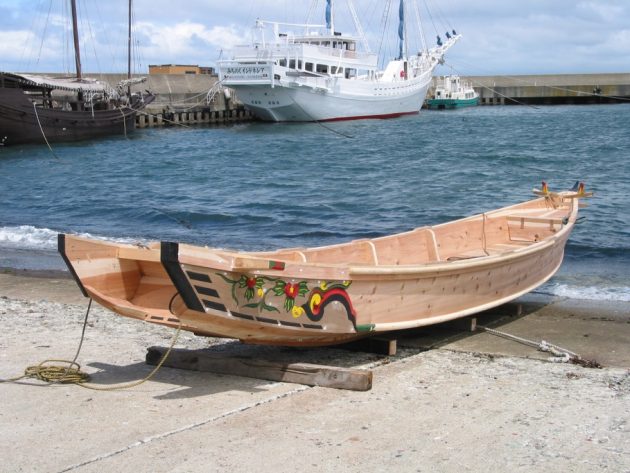

Author
Douglas Brooks
Author's Bio
Douglas Brooks is a witness to an almost lost Japanese traditional art, and is dedicated to its preservation. Since 1990, in 25 trips to Japan, he has apprenticed with five elderly Japanese boatbuilders, and has met and interviewed over 50 in all. He has published a fascinating book documenting and placing on record for posterity what he has learned: Japanese Wooden Boatbuilding. www.douglasbrooksboatbuilding.com
Credits


